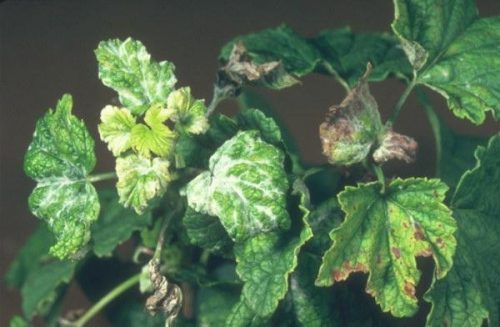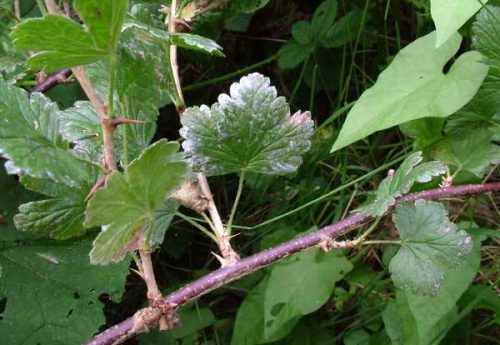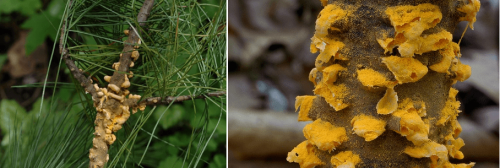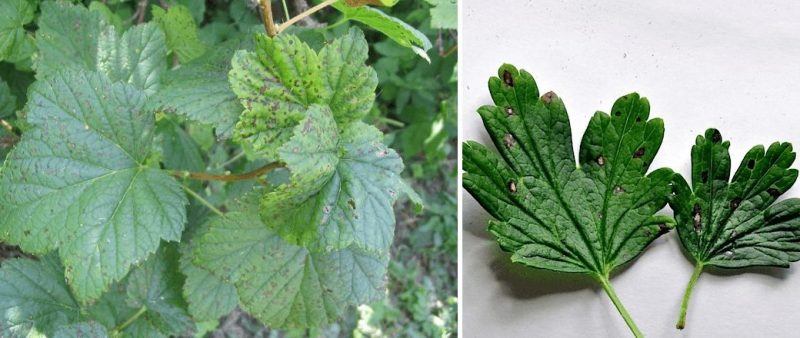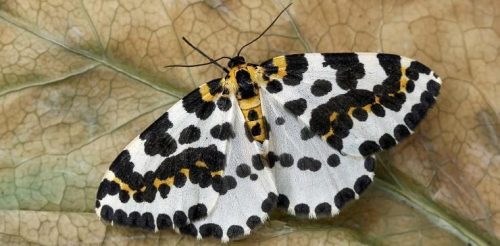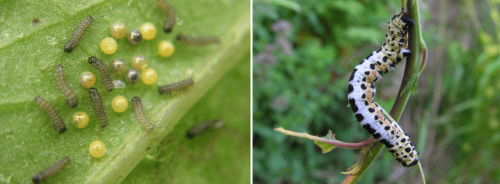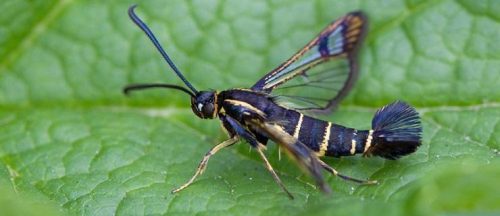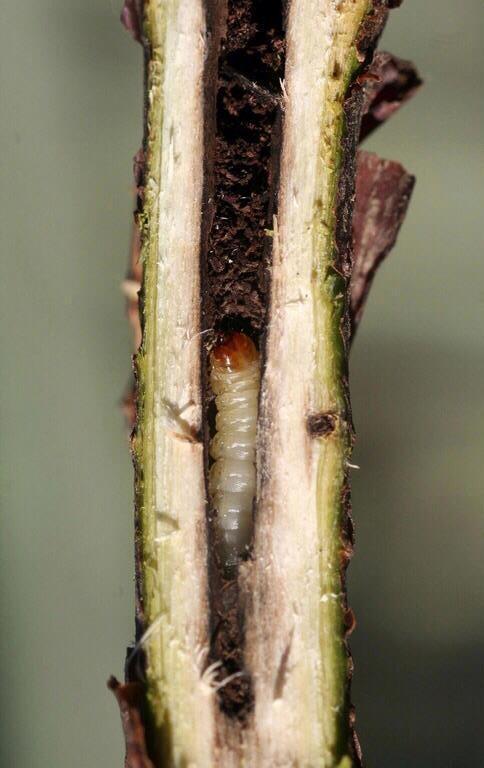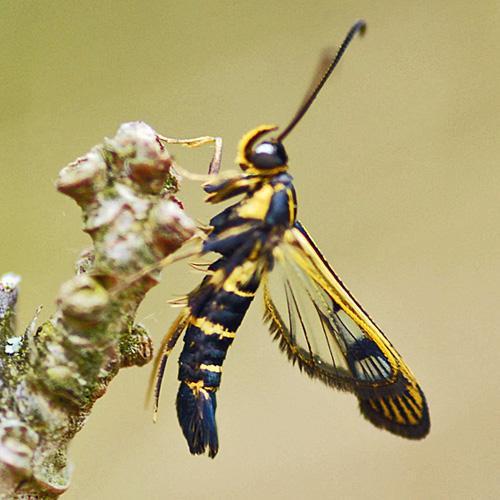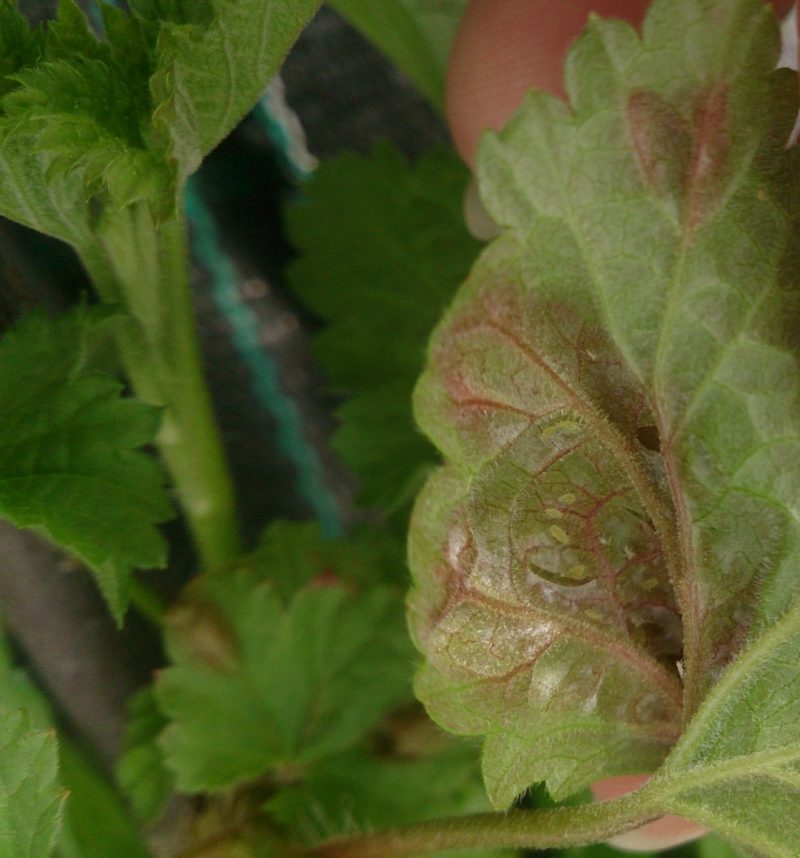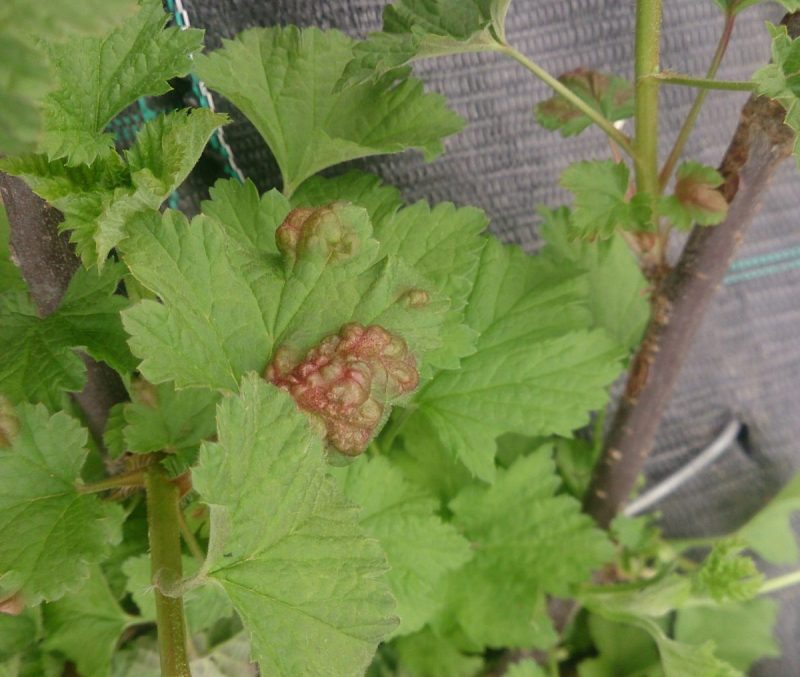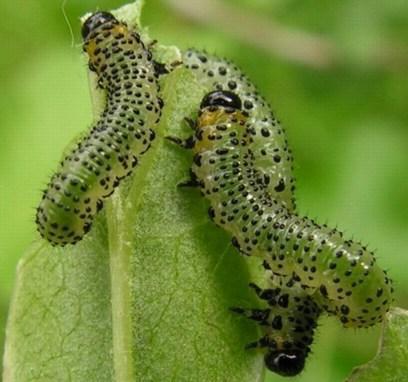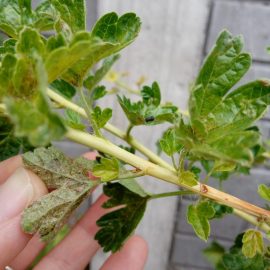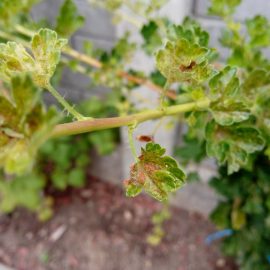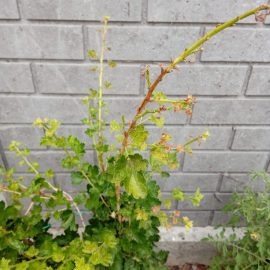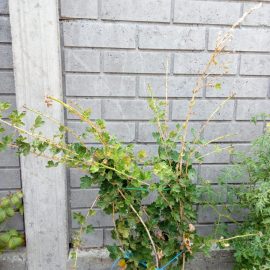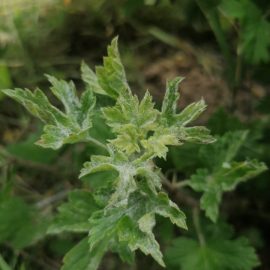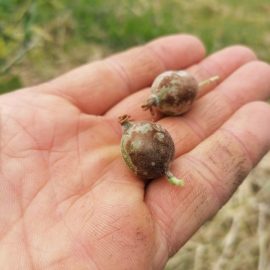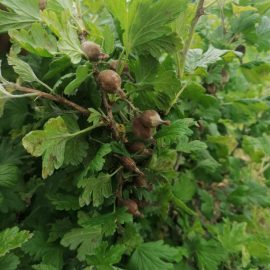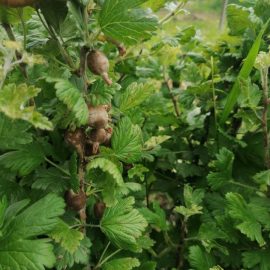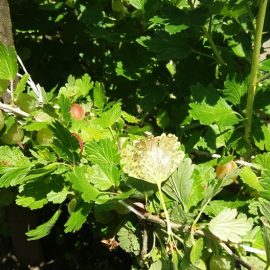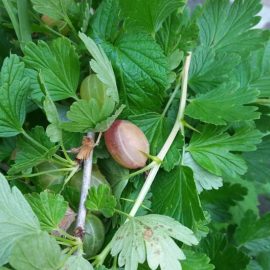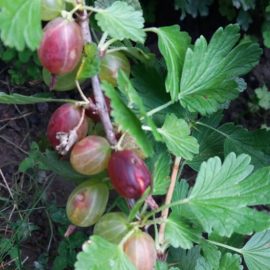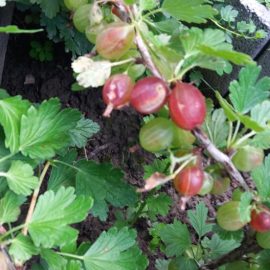Gooseberry treatments, pest and disease control
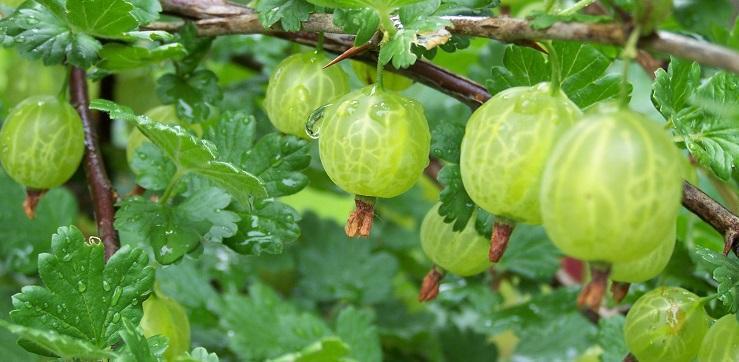
Gooseberry or European gooseberry (Ribes uva-crispa) is found in the spontaneous flora of Europe, Asia, and North and Central America. Due to its high adaptability, the European gooseberry can be grown in many areas, with different environmental conditions.
European gooseberry fruits are known for their rich vitamin content and their beneficial effects on health. They can be consumed fresh or as an ingredient in jams, jellies, desserts, and refreshing juices. They can be preserved as dried fruit or jams and jellies.
The main diseases of gooseberry shrubs
Powdery mildew (Sphaerotheca mors-uvae)
The fungus infests leaves, young shoots, and fruits. The symptoms on the leaves appear as whitish spots formed by the fungus mycelium and are visible on both sides of the leaf. Attacked leaves remain small and when conidia form, the mycelial felt becomes powdery. The attack leads to leaf deformation and drooping and to abnormal plant growth. Also, the stems’ resistance to frost is affected.
On the shoots, the attack occurs in late spring, starting in May, as a dusty mycelial felt surrounding the shoots in various sizes.
Young fruits turn black and shrivel and larger fruits show hairy spots, whitish at first, turning greyish-brown. Near the spots, the tissues become necrotic and the fruit is covered with a wet or dry mold, depending on the atmospheric humidity.
The fungus overwinters through the mycelium located on the shoots and buds or through the fungus fructification. This disease mainly occurs due to excess moisture and the presence of airborne spores.
Prevention and control measures
To prevent the pathogen from appearing, it is recommended to place the planting material at a suitable distance to ensure good aeration. Apply pruning and keep the crop free of weeds. Take into account any attacks in previous years and carry out preventive fungicide treatments every 7-10 days.
In plantations affected by this fungus, it is recommended to remove and burn the attacked leaves. Apply treatments during the dormant period with specific products. To control powdery mildew in vegetation, apply specific fungicides.
Recommended products
-
You can find products on a different store
Change Store -
You can find products on a different store
Change Store -
You can find products on a different store
Change Store -
You can find products on a different store
Change Store -
You can find products on a different store
Change Store -
You can find products on a different store
Change Store -
You can find products on a different store
Change Store -
You can find products on a different store
Change Store -
You can find products on a different store
Change Store -
You can find products on a different store
Change Store -
You can find products on a different store
Change Store -
You can find products on a different store
Change Store -
You can find products on a different store
Change Store -
You can find products on a different store
Change Store -
You can find products on a different store
Change Store -
You can find products on a different store
Change Store -
You can find products on a different store
Change Store -
You can find products on a different store
Change Store -
You can find products on a different store
Change Store -
You can find products on a different store
Change Store -
You can find products on a different store
Change Store -
You can find products on a different store
Change Store -
You can find products on a different store
Change Store -
You can find products on a different store
Change Store
European powdery mildew of gooseberry (Microsphaera grossulariae)
It is less widespread and less harmful compared to Sphaerotheca mors-uvae.
During the vegetation period, the fungus spreads through spores. It persists through its resistance mycelium, located under the bud scales, from one year to another.
The recommended prevention and control measures for Sphaerotheca mors-uvae can be applied in the case of Microsphaera grossulariae too.
Currant and gooseberry leaf spot or anthracnose (Pseudopeziza ribis)
It is often found in the gooseberry and currant plantations and can cause massive defoliation of these plants, especially in humid regions, with cooler summers.
The fungus mainly attacks leaves and less often shoots and fruits. Attacked leaves show numerous circular spots of 1-2 mm in diameter and reddish-brown color. The tissue in the center of the spots turns brown and the fungus forms spores. The spots spread and may merge, leading to leaf yellowing and mass drop.
The attack on the shoots presents as elongated, brown spots on the bark, which develop into small open cankers. The attack on the fruit occurs rarely and leads to fruit shriveling and falling. The disease is favored by temperatures of 15-25ºC and high humidity. Spores of the fungus ensure the dissemination of the disease.
The pathogen overwinters either as spores, which are resistant to low temperatures or as mycelium in bark or fallen leaves.
Prevention and control measures
It is recommended to maintain cultural hygiene by removing the attacked shoots.
Treat with copper products during dormancy until the buds swell. During the vegetation period, treat with specific fungicides.
Recommended products
-
You can find products on a different store
Change Store -
You can find products on a different store
Change Store -
You can find products on a different store
Change Store -
You can find products on a different store
Change Store -
You can find products on a different store
Change Store -
You can find products on a different store
Change Store -
You can find products on a different store
Change Store -
You can find products on a different store
Change Store -
You can find products on a different store
Change Store -
You can find products on a different store
Change Store -
You can find products on a different store
Change Store -
You can find products on a different store
Change Store -
You can find products on a different store
Change Store -
You can find products on a different store
Change Store -
You can find products on a different store
Change Store -
You can find products on a different store
Change Store -
You can find products on a different store
Change Store -
You can find products on a different store
Change Store -
You can find products on a different store
Change Store -
You can find products on a different store
Change Store -
You can find products on a different store
Change Store -
You can find products on a different store
Change Store -
You can find products on a different store
Change Store -
You can find products on a different store
Change Store
Rust of gooseberry and currant (Cronartium ribicola)
It is found in all areas where the gooseberry grows close to wild flora and pine trees (Pinus strobus).
The presence of pine near the gooseberry crops leads to rust infestation. Yellow spores form on pine leaves and branches are easily carried by insects over long distances. The wind carries the spores over relatively short distances.
After the attack, numerous yellow spots appear on the upper part of the leaf blade. On the underside, the fungus forms brown blisters, which are the summer spores. The attacked leaves turn yellow and drop. The shoots remain leafless prematurely and do not lignify enough, freezing over the winter. Gooseberry fruits remain small and do not ripen normally.
The spores produced in the summer lead to its spread and transmission the following year. Resistance spores germinate and infect the pine, on which the fungus forms further generations of spores.
Prevention and control measures
The gooseberry plantations should be as far away as possible from the pine trees. In order to protect the pine nurseries, it must be ensured that there are no Ribes sp. plants nearby.
Recommended products
-
You can find products on a different store
Change Store -
You can find products on a different store
Change Store -
You can find products on a different store
Change Store -
You can find products on a different store
Change Store -
You can find products on a different store
Change Store -
You can find products on a different store
Change Store -
You can find products on a different store
Change Store -
You can find products on a different store
Change Store -
You can find products on a different store
Change Store -
You can find products on a different store
Change Store -
You can find products on a different store
Change Store -
You can find products on a different store
Change Store -
You can find products on a different store
Change Store -
You can find products on a different store
Change Store -
You can find products on a different store
Change Store -
You can find products on a different store
Change Store -
You can find products on a different store
Change Store -
You can find products on a different store
Change Store -
You can find products on a different store
Change Store -
You can find products on a different store
Change Store -
You can find products on a different store
Change Store -
You can find products on a different store
Change Store -
You can find products on a different store
Change Store -
You can find products on a different store
Change Store
Septoria leaf spot (Mycosphaerella ribis)
The symptoms are similar to anthracnose, except that the spots have a lighter-colored center. The pathogen overwinters in fallen leaves.
Prevention and control measures
Moisture favors the occurrence of this disease. To reduce the risk of infection, it is recommended to plant gooseberries at appropriate distances and to destroy the weeds in the plantation.
The main pests of gooseberry shrubs
Common magpie moth (Abraxas grossulariata)
Description. The adult is a yellowish-white winged butterfly with many black spots arranged transversely. The larva is white, with black spots on the dorsal side and orange stripes on the sides. The body is 3-4 cm long, and the head and legs are black. Eggs are oval-elongated and yellowish-brown. After hatching, at about 3 weeks, the larvae emerge and feed on the shrub’s leaves.
Biology. This pest has one generation per year and overwinters as early instar larvae in nests made of leaves and silk threads or under leaves. In spring, the larvae feed on buds and leaves and may also attack inflorescences. In June, the larvae retreat to pupate and in July-August, the adults emerge. After mating, the female lays about 230-280 eggs on the underside of the leaves. After incubation, which lasts 16-18 days, the larvae emerge and feed for a few weeks before retiring to hibernate.
Mode of attack. Damage is caused by larvae, which attack the leaves of the gooseberry and currant. A strong attack results in complete defoliation with major impacts on production.
Prevention and control measures
It is recommended to collect leaves in autumn and destroy them to reduce the number of hibernating larvae. Chemical treatments should be done when adults appear.
Recommended products
-
You can find products on a different store
Change Store -
You can find products on a different store
Change Store -
You can find products on a different store
Change Store -
You can find products on a different store
Change Store -
You can find products on a different store
Change Store -
You can find products on a different store
Change Store -
You can find products on a different store
Change Store -
You can find products on a different store
Change Store -
You can find products on a different store
Change Store -
You can find products on a different store
Change Store -
You can find products on a different store
Change Store -
You can find products on a different store
Change Store -
You can find products on a different store
Change Store -
You can find products on a different store
Change Store -
You can find products on a different store
Change Store -
You can find products on a different store
Change Store -
You can find products on a different store
Change Store -
You can find products on a different store
Change Store -
You can find products on a different store
Change Store -
You can find products on a different store
Change Store -
You can find products on a different store
Change Store -
You can find products on a different store
Change Store -
You can find products on a different store
Change Store -
You can find products on a different store
Change Store
Currant clearwing (Synanthedon tipuliformis)
It is widespread in the currant and gooseberry cultivation areas, being one of the most damaging pests of these fruiting species.
Description. Adults are butterflies with a metallic blue body, 3 yellow rings, and a fan-shaped tail. The wings are transparent with a dark tip. Larvae are yellowish-white, with a brownish head and 3 pairs of legs.
Biology. This pest has one generation per year and overwinters as a larva in galleries at the base of the shrub. In spring, the larvae turn into chrysalids, and in May the first butterflies appear. After copulation and egg-laying, the larvae appear during the fruit development period. The larvae enter the shoots at the base of the buds and feed on the buds and some of the wood. During leaf fall, the larvae descend and overwinter at the base of the shoots.
Mode of attack. The larvae are the most damaging, feeding on the stem and twig marrow and some of the wood. Attacked plants have dry leaves and stems and in case of a strong attack, the bush dries out.
Prevention and control measures
It is recommended to collect and destroy the attacked twigs. For adult control, you can carry out 1-2 treatments with specific insecticides.
Recommended products
-
You can find products on a different store
Change Store -
You can find products on a different store
Change Store -
You can find products on a different store
Change Store -
You can find products on a different store
Change Store -
You can find products on a different store
Change Store -
You can find products on a different store
Change Store -
You can find products on a different store
Change Store -
You can find products on a different store
Change Store -
You can find products on a different store
Change Store -
You can find products on a different store
Change Store -
You can find products on a different store
Change Store -
You can find products on a different store
Change Store -
You can find products on a different store
Change Store -
You can find products on a different store
Change Store -
You can find products on a different store
Change Store -
You can find products on a different store
Change Store -
You can find products on a different store
Change Store -
You can find products on a different store
Change Store -
You can find products on a different store
Change Store -
You can find products on a different store
Change Store -
You can find products on a different store
Change Store -
You can find products on a different store
Change Store -
You can find products on a different store
Change Store -
You can find products on a different store
Change Store
Red currant aphid (Cryptomyzus ribis)
The presence of aphid attack is signaled by deformed leaves at the top of the shoots, which turn reddish or yellow. Pale yellow colonies of aphids are found under these deformations. These aphids start attacking late in spring and in summer appear as winged forms that spread to other plants. In spring the eggs will hatch and colonies of aphids will form again on the lower side of the leaves.
Common gooseberry sawfly (Nematus ribesii, Nematus leucotrochus and Pristiphora appendiculata)
The three species of wasps attack the gooseberry crops during spring and summer. They can have 1-4 generations a year and spend the winter as larvae in a cocoon, in the ground. The period when these are the most active is April-September. After mating, the females lay the eggs on the lower side of the leaves.
The larvae are the most damaging, feeding on the leaves of the shrub and leading to its defoliation. The plant’s resilience and production will be significantly decreased.














































































































































































































































































































































































































































